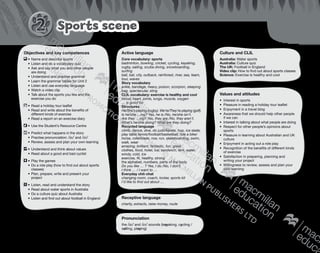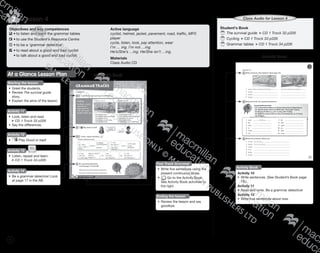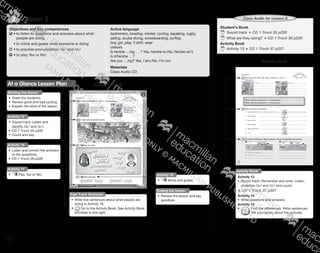This document contains the objectives and materials for two English language lessons. The first lesson introduces students to different sports through vocabulary presentation, listening activities, and a vocabulary quiz. Students ask and answer questions about sports they like and learn about popular sports in Australia. The second lesson has students read a holiday tour leaflet, answer true/false questions, write their own city tour, and listen and complete a conversation about activities. The lessons aim to develop students' English skills through sports and travel topics.





















